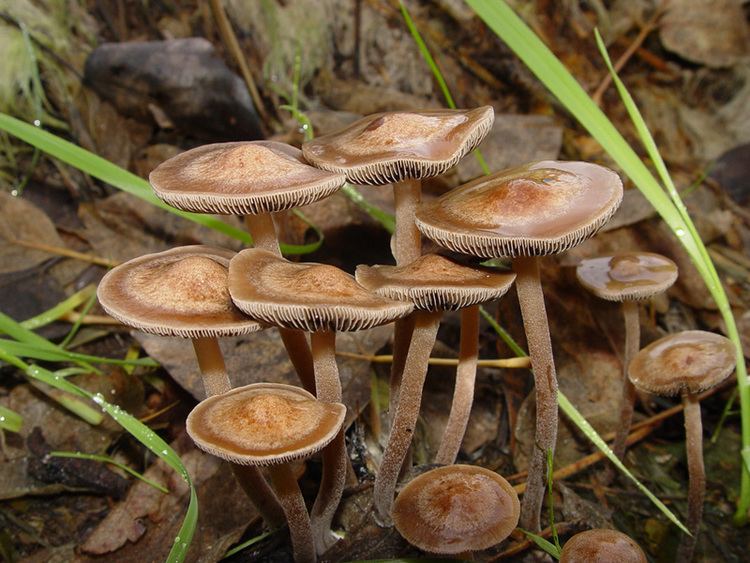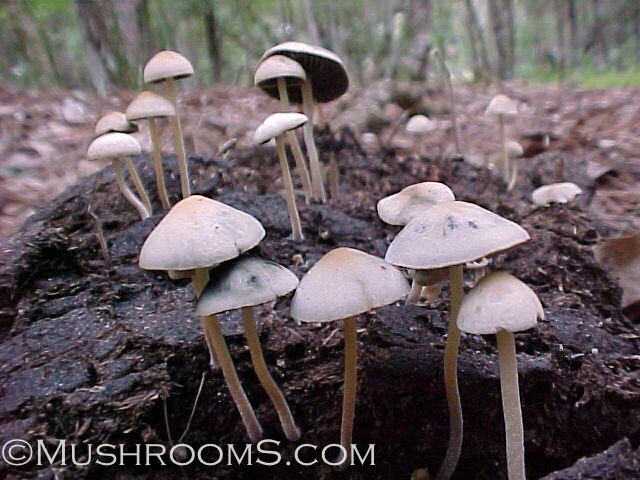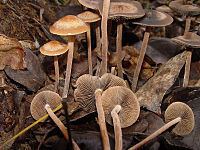Kingdom Fungi Higher classification Psathyrellaceae Order Agaricales | Division Basidiomycota Scientific name Panaeolus | |
 | ||
Lower classifications Panaeolus cyanescens, Panaeolus cinctulus, Panaeolus semiovatus var semi, Panaeolus olivaceus, Dark‑rimmed Mottlegill | ||
Panaeolus castaneifolius fungi kingdom
Panaeolus is a genus of small, black-spored, saprotrophic agarics. The word Panaeolus is Greek for "all variegated", alluding to the spotted gills of the mushrooms produced.
Contents

Characteristics

These fungi are mostly dung and grassland species, some of which are quite common in Europe and North America. The gills of Panaeolus do not deliquesce as do the members of the related genera Coprinellus and Coprinopsis. Members of Panaeolus can also be mistaken for Psathyrella, however the latter genus is usually found growing on wood or lignin-enriched soils and has brittle stipes.

The gills of these mushrooms are black or grey and have a spotty, speckled or cloudy appearance, caused by the way that the dark spores ripen together in tiny patches on the gill surface; different patches darken at different times. The spores are smooth.

The closely related genus Panaeolina shares the spotted gills but they are dark brown (not black) and the spores are ornamented. This genus is sometimes treated as part of Panaeolus.

The spores are smooth or roughened, with a germ pore, and all species except for Panaeolus foenisecii have a jet black spore print.
Edibility
No members of Panaeolus are used for food, though some are used as a psychedelic drug. Thirteen species of Panaeolus contain the hallucinogen psilocybin including Panaeolus cyanescens and Panaeolus cinctulus. The bluing hallucinogenic members of this genus are sometimes segregated into a separate genus, Copelandia.
Several members of this genus are known to contain psilocin and psilocybin and it is suspected that a number of other members of this genus contain unidentified psychoactive compounds. All members of this genus contain serotonin.
